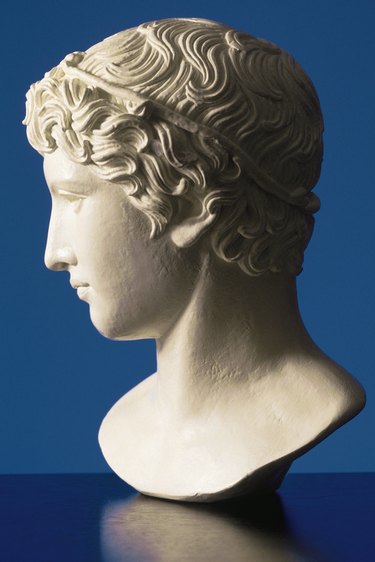
The early Italian Renaissance, which lasted for much of the 14th and 15th centuries, witnessed significant advances in the art of sculpture. Eschewing the allegorical style of the Middle Ages, Renaissance sculptors carved biblical, classical and contemporary figures with a striking degree of realism and individualism via techniques that spanned the whole history of Western art.
Syncretistic Influences
Video of the Day
Although it's true that Renaissance sculptors sought inspiration in the works of Green and Roman artists thousands of years in the past, they were not seeking a total break with the art of the Middle Ages, but rather a synthesis of different influences from throughout history. For example, the later works of Donatello draw inspiration from both medieval and classical sources, and his sculptures of three child angels in Sienna display a biblical scene using techniques borrowed from the ancient Etruscans. In this way, Renaissance sculptors and artists viewed their work as incorporating the best of all that had come before.
Video of the Day
Religious Themes
Religion played almost as prominent a role in Renaissance sculpture as it had during the Middle Ages. Frequently depicted subjects of sculpture in this period included famous saints, Jesus and his mother and other figures from the New Testament. Andrea del Verrochio completed a sculpture of Christ and St. Thomas that was installed in the church of Orsanmichele in Florence in 1483 and, like Donatello and Michelangelo, he carved a famous statue of David.
Renaissance Realism
Advances in perspective and the depiction of human anatomy resulted in a trend of increasing naturalism in Renaissance sculpture, in which human and animal figures were depicted with startling life-likeness. Donatello pioneered this trend with his realistic statues of St. Mark and St. George in 1415, and the equestrian monument of Gattamelata, the first equestrian statue since the classical era. Other sculptors known for their naturalistic portrayals included Piero di Giovanni Tedesco, Nanni di Banco and Lorenzo Ghiberti, who used perspective to lend a degree of similitude to his relief carvings.
Sculpting Materials
While artists of the Northern Renaissance carved statues out of wood, this was less common in Italy because of the relative lack of forested areas. More often, Italian artists turned to marble, which allowed them a degree of subtlety and expressiveness that was not possible with other materials. Often this marble was quarried locally. However, sometimes terra cotta was used in place of marble because it was more affordable. Once a statue was completed, the artist might paint the hair or even skin, as sculptors had done in Ancient Greece and Rome.